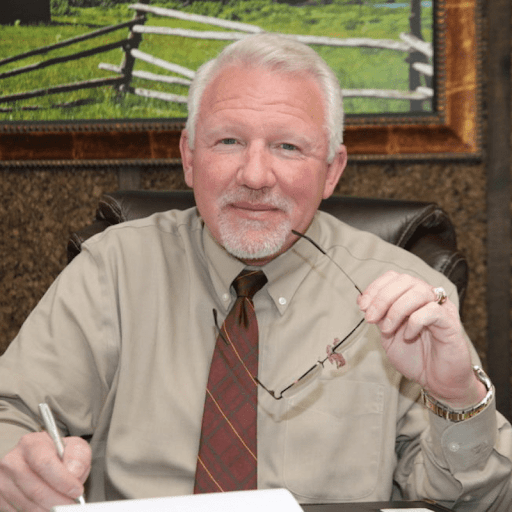Residing in Afton, Wyoming, Daniel Schwab is a seasoned entrepreneur and a prominent figure within the local community. With his roots firmly planted in Star Valley, Daniel’s enduring fascination with nature and wildlife was cultivated from a young age.

During his upbringing, Daniel received invaluable tutelage from both his father and grandfather in the arts of hunting and fly fishing, deepening his profound appreciation for the natural environment that surrounded him. His active involvement in the scouting program led to the attainment of his Eagle Scout rank, further enhancing his reverence for the great outdoors. Today, his passion for environmental conservation remains as steadfast as ever, serving as a driving force in both his professional and personal pursuits.
Daniel Schwab pursued his academic endeavors in the realm of business and financial management at Utah State University. Following his collegiate years, he embarked on a journey as an entrepreneur, founding a series of prosperous start-up companies. One such venture specialized in the restoration and preservation of ranchlands, with a particular emphasis on rejuvenating habitats crucial to fish and wildlife.
As a child who once spent countless hours exploring the spring creeks in his own backyard, Daniel was acutely aware of the vital role these waterways played in supporting spawning fish and the surrounding ecosystem. Witnessing the adverse effects of inadequate land management by local farmers and ranchers, including overgrazing and stream bank degradation, fueled his determination to seek improved methods for safeguarding these vital spring creeks and their environs.
In 1997, Daniel Schwab joined forces with accomplished business leaders on a mission to acquire neglected ranches in Idaho and Wyoming. Subsequently, he enlisted the expertise of specialists to facilitate the permitting, design, engineering, and execution of comprehensive restoration and preservation plans for these lands. This approach allowed nature to heal itself organically.
In a few short years, by 2002, Daniel Schwab’s enterprises had secured some of the most coveted land in Wyoming and stood as prominent landowners in the state, controlling in excess of 30,000 deeded acres, complemented by over 100,000 acres under state and BLM leases. Witnessing the remarkable progress his companies achieved in such a brief span of time only further ignited his commitment to preserving the natural beauty of his home state and its neighboring regions.
As his interest in conservation deepened, Daniel Schwab explored diverse conservation programs and encountered the innovative concept of conservation banking. Surrounding himself with the nation’s leading conservation bank experts, he went on to establish Terrawest Conservancy—a dedicated organization focused on creating conservation banks. Through these banks, landowners are provided opportunities to protect endangered species and their habitats. Daniel’s aspiration is to contribute to the enhancement of the Intermountain West, fostering a harmonious balance between wildlife, fisheries, and those who cherish these resources.
Beyond his involvement with Terrawest Conservancy, Daniel Schwab serves as the owner of Renegade Wyoming—a conservation-centric in-holding of property situated in the Bridger-Teton National Forest. This property offers homesites within a luxurious fly-in community positioned at the southern edge of the Greater Yellowstone ecosystem. Additionally, he owns Feathered Hook of Jackson Hole, an exclusive private fly-fishing club. An accomplished photographer, Daniel has a remarkable talent for capturing the breathtaking beauty of landscapes and wildlife. He views his photographs as gifts from a higher power and, as such, has never sought to profit from them. Instead, he generously donates them to charitable causes and shares them with others, offering a visual testament to the splendor of Mother Nature and the grandeur of the Earth as bestowed by a divine hand.
To see more from Daniel Schwab Wyoming check out his SoundCloud and Medium!
How Grassroots Initiatives Are Driving Environmental Conservation
In the battle against environmental degradation and the ever-looming threat of climate change, grassroots initiatives have emerged as a powerful force for positive change. These community-driven efforts represent a groundswell of commitment to environmental conservation that transcends borders and political divides. In this blog, Daniel Schwab Wyoming will explore how grassroots initiatives significantly impact the preservation of our planet.
Local Knowledge, Global Impact
Grassroots initiatives harness ordinary citizens’ knowledge, passion, and dedication who are deeply connected to their local environments. Whether it’s a neighborhood cleanup project, a tree-planting campaign, or a community garden, these initiatives start small but can have far-reaching effects. By focusing on local issues, they address global challenges.
Community Engagement
One of the critical strengths of grassroots initiatives is their ability to engage communities. When people come together to protect their shared environment, camaraderie and purpose are fostered. This strengthens bonds within the community and empowers individuals to take ownership of their role in environmental conservation.
Education and Awareness
Grassroots initiatives often prioritize education and awareness-raising. They conduct workshops, host seminars, and use social media platforms to inform and inspire others. By spreading knowledge about the importance of environmental conservation, these initiatives create a ripple effect, encouraging more people to join the cause.
Policy Advocacy
In addition to on-the-ground actions, grassroots initiatives can also influence policy decisions. Policymakers are more likely to take notice when a community speaks with a united voice. Local initiatives can advocate for environmentally friendly policies, such as banning single-use plastics or promoting renewable energy sources, and drive local and national change.
Innovation and Creativity
Grassroots initiatives often bring a fresh perspective to environmental challenges. With limited resources, they must find innovative and creative solutions. This can lead to the development of sustainable practices and technologies that have the potential to be adopted on a larger scale.
Case Study: The Greening of an Urban Neighborhood
Consider the example of a grassroots initiative in an urban neighborhood. Residents came together to transform abandoned lots into community gardens, creating green spaces where there were once concrete jungles. This improved the neighborhood’s aesthetic and provided fresh produce for residents, decreasing the need for transportation and packaging. Moreover, it served as a model for other communities, inspiring similar projects in different parts of the city.
In conclusion, grassroots initiatives are crucial in driving environmental conservation efforts. They empower individuals and communities to take action, raise awareness, and advocate for change. While they may start small, their impact is significant and far-reaching, illustrating the power of collective action in preserving our planet for future generations. Whether you’re part of a grassroots initiative or considering starting one, remember that every small step contributes to a greener and more sustainable future.
